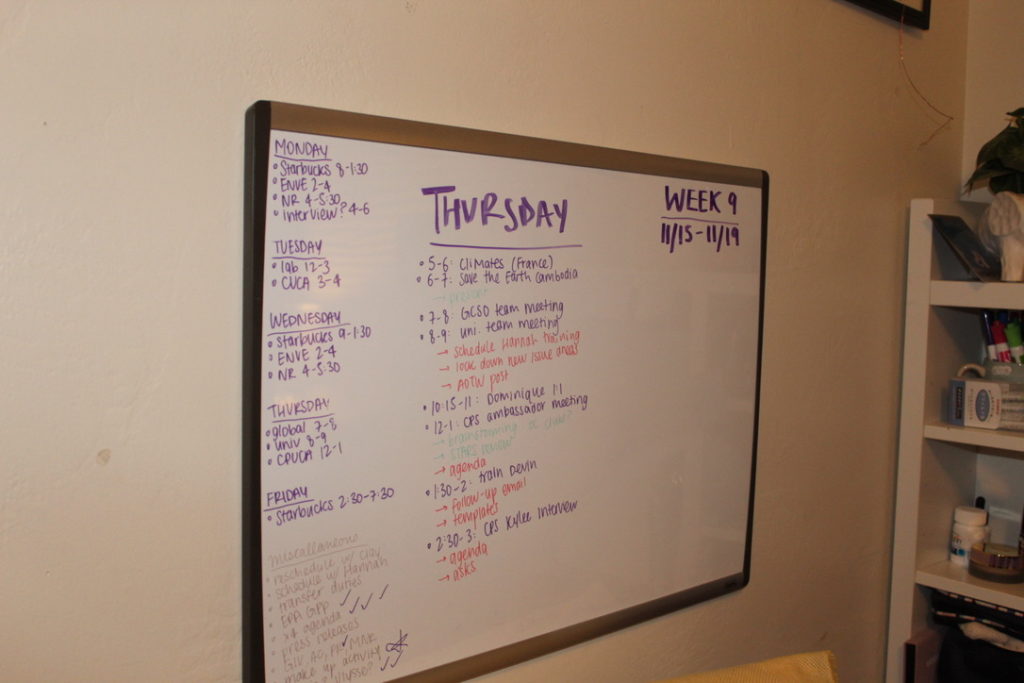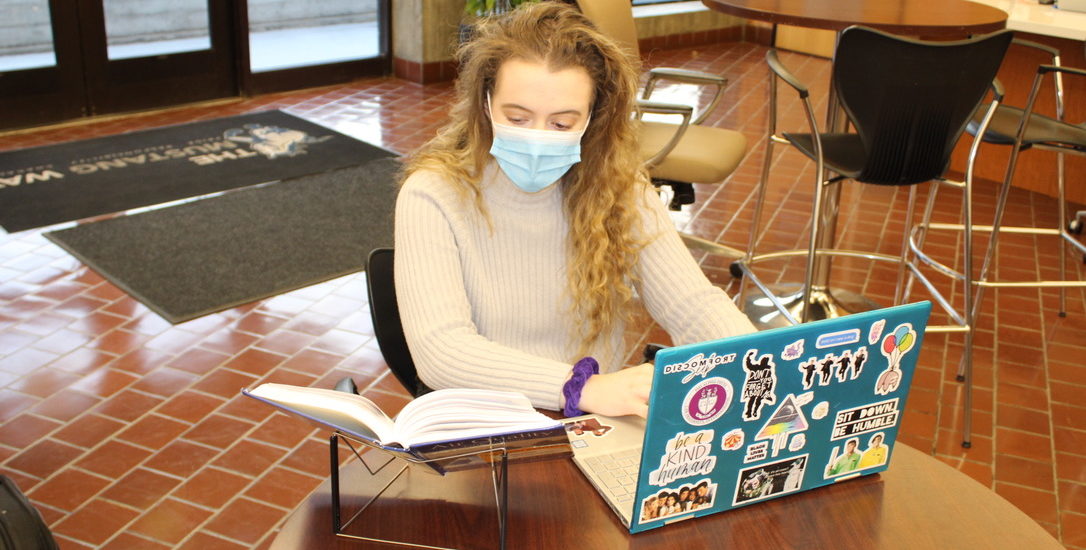By Cameron Harber and Grace Kitayama
Between her internship, part-time job, pre-law fraternity, and 12 units of classes, Hadley Willman spends over 90 hours a week working—which is a lighter schedule than she had last quarter.
“You’re too busy to be overwhelmed because there’s no time for being overwhelmed, there’s no time to process things and rest,” environmental policy senior Willman said. “And so that kind of just leads to a perpetual state of tiredness.”
Willman’s schedule is not uncommon for students who need to have a part-time job on top of their unpaid internship. That’s the norm for students in some majors with an internship requirement, but students in other majors have no trouble finding internships that pay.
The hunt for summer internships often begins in January. As Cal Poly students start the process, they are finding that the opportunities available to them often depend on their chosen field.
However, for construction management major Sophia Stewart, paid internships are the norm and she received more than just an hourly wage.

Williman has a white board set up in her room to organize and keep track of her busy schedule
The paid versus unpaid experience
In the United States, 42% of virtual internships and 34.9% of in-person internships offered are still unpaid, according to a recent study. There is a seven-pronged checklist for whether an internship can legally be unpaid, according to the Department of Labor. Internship advisors ensure these requirements are met and students are getting genuinely valuable work experience.
A 2020 study found the two most common reasons students in the U.S. did not participate in an internship were the need to work a paid job and the inability to balance a heavy course load. Summer internships are popular amongst students because they don’t have the added stress of classes. The hunt for summer internships often starts in January and the perks make them competitive. However, students may pass up an internship if it is unpaid because they need to make money to support themselves elsewhere.
Willman began her unpaid internship in the summer and is staying with the company with the hopes it will turn into a full-time position when she graduates. She is passionate about the work she does but admits there are drawbacks.
“The unpaid aspect of it is unfortunate,” Willman said. “But that does come with working for a nonprofit, which doesn’t mean that they can’t pay, but it also means that it’s not one of their priorities, and when they are looking for funding that say, might turn into salary, they don’t prioritize it.”
In the meantime, students still have to make money one way or another. California college students have an average of $2,020 non-tuition costs per month and attributed costs and their school-work balance as the biggest obstacles to success, according to a California Student Aid Commission Survey.
But, not all Cal Poly students are required to take on an overwhelming schedule in order to complete an internship because they have access to predominantly paid opportunities.
Nearly every internship in Wine & Viticulture is paid according to the lecturer and the internship advisor for Cal Poly’s Wine & Viticulture Department, Adrienne Ferrara, Internships in the industry are widely available because the number of employers asking for interns greatly outnumbers the students looking for internships, she said. Wine and viticulture internships are especially plentiful in San Luis Obispo, where SLO CAL estimates there are more than 250 wineries in the county.
Some majors don’t require internships purely because of the lack of availability in the immediate area or the opportunity for other Learn by Doing experiences such as research or a talent showcase.
Construction management senior Sophia Stewart recently accepted a full-time position at a company she interned with two summers in a row receiving both housing and an hourly wage.
Employers are 94% more likely to consider a candidate who has completed an internship or apprenticeship with that company or organization, according to a 2015 Hart survey.
“I think that [the company] sees the value of investing in finding the right kind of people,” Stewart said. “Because obviously, like the interns even though we don’t have any experience like we’re the next generation of people in the working world, and so I think by them going and investing in you and kind of proving to you that you’re important, It’s kind of attractive. I think it attracts a plethora of people who they can kind of choose from.”
What is Cal Poly doing to address the barriers?
The Dean’s Office of the College of Liberal Arts has made efforts to address the burdens that come with unpaid work. The Access, Community and Equity (ACE) program provides first-generation or low-income students stipends of up to $1,000 so they can participate in “high-impact” experiences such as an unpaid internship.
The hardest thing for students is knowing where to go for help, College of Liberal Arts Associate Dean of Student Success, Dr. Kate Murphy said.
Some departments on campus have endowments or programs for specific internships like the Panetta Congressional Internship Program, where one Cal Poly student every year works as a congressional intern in Washington D.C. with costs covered by The Panetta Institute.
These funds are often limited on the number of students they can pay for and only cover specific opportunities outlined by the endowment or program.
Internships are one of the factors that set Cal Poly’s liberal arts students apart from other institutions, Murphy said. “In an ideal world, we would have other funds to support students.”
Cal Poly also offers the Student Undergrad Research Program (SURP), and the Believe, Educate & Empower, Advocate, Collaborate, Nurture (BEACoN) research program that are both paid opportunities that offer professional paid professional experience for students and could serve as an alternative Learn by Doing experience for an unpaid internship.
Department chairs and internship advisors are constantly seeking to find solutions for students who face barriers with their unpaid internships, even if at this point it is on a case-by-case basis.
“I enjoy all the work I do one way or another,” Hadley said. “I like having an impact with the work I do with my internship—that’s the most important thing I want to get out of my career. And so that’s been very valuable, the experience and the people I’ve met.”






